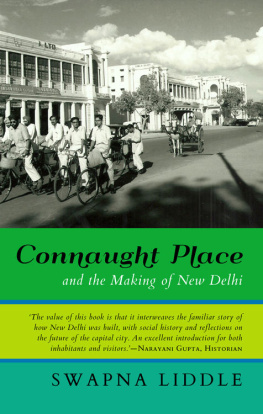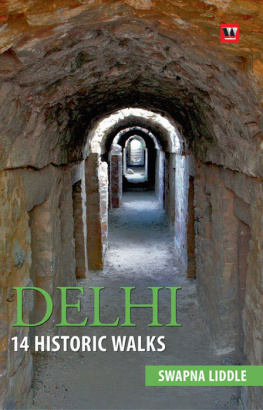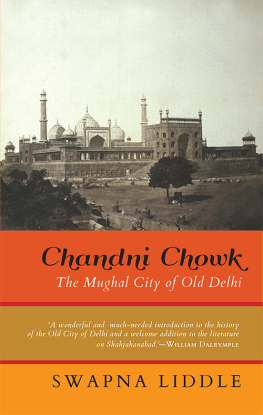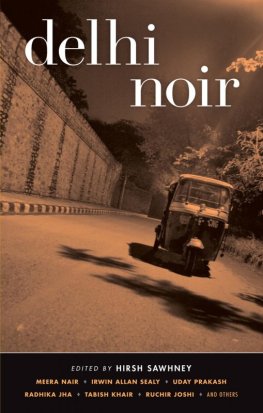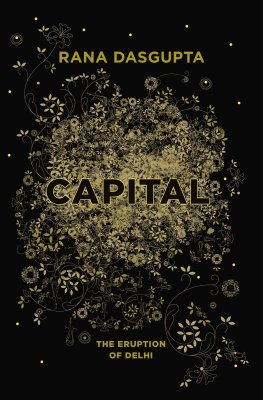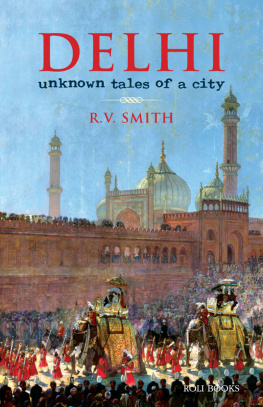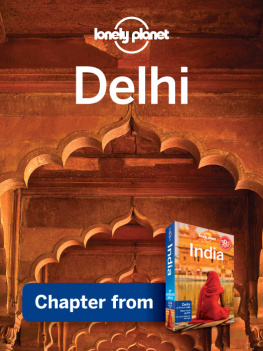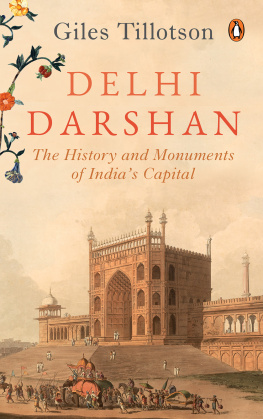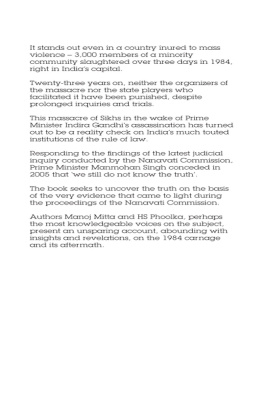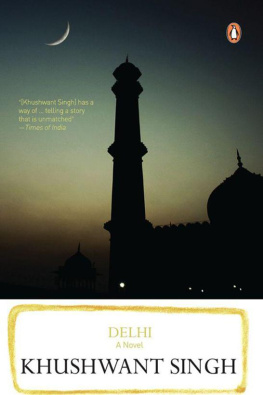
Connaught Place
ALSO BY SWAPNA LIDDLE
Delhi: 14 Historic Walks (2011)
Chandni Chowk: The Mughal City of Old Delhi (2017)

Contents
Acknowledgements
MY INITIAL INVESTIGATION INTO HOW NEW DELHI came to be, was carried out in the context of an application to the United Nations Educational, Scientific and Cultural Organisation (UNESCO) for recognition of this twentieth-century capital, along with Shahjahanabad, the Mughal one, as a World Heritage Site. In the process I read extensively, attended illuminating lectures by experts and had numerous discussions with them. It is not possible to acknowledge all of them by name, but I would like to thank Mr A.G.K. Menon and Annabel Lopez, who directed the project for the Indian National Trust for Art and Cultural Heritage (INTACH), Delhi Chapter. It was long discussions with them that led to a development of my own thoughts on what makes New Delhi special.
This book, which is in many ways inspired by that project, owes its being to Renuka Chatterjee, who commissioned and edited it. Maithili Doshi and Neeti Banerji have worked diligently to give it its beautiful final form. Gourab Banerji, as always, has used his language skills to settle it. Sondeep Shankar, Jayshree Shukla, and Gopalan Rajamani generously shared their photographs. I am grateful to all of them.
I would also like to acknowledge all those who love the city of Delhi and its multi-layered history, and want to know more about it. It is your interest and concern that can ensure that this citys heritage will survive into the future.

An outline of the city as planned
Introduction
NEW DELHI IS THE CAPITAL OF INDIA. IT IS ALSO ONE OF the largest cities in the world today. To those who know Delhi more closely, it is the alter ego of Old Delhi, which is the seventeenth-century Mughal city founded by Emperor Shahjahan. Few people know that New Delhi was a name originally applied to a rather small part of the Delhi we know today. This was the core zone of the Imperial City, the capital of the British Raj, formally inaugurated in 1931. Roughly speaking, to the east it was bounded by Mathura Road and Purana Qila, to the west by the Central Ridge, and to the south by Safdarjungs Tomb and what we today know as Lodi Road. Its northern part was made up of a business and commercial district, which we know today as Connaught Place.
Things become clearer with the realization that what we today know as the metropolis of New Delhi, has grown out of a relatively modestly sized urban settlement, founded in the early twentieth century to serve as the new capital of British India. This city was the last in line of the several historic cities of Delhi, and has lent its name to the metropolis that has since grown around it.
This book is about the making of the city of New Delhi, and of Connaught Place, its iconic shopping, dining and recreational centre. It picks up the story at the beginning, when the idea of shifting the capital from Calcutta to Delhi first germinated in the minds of the British colonial rulers of India. It examines the process through which it was planned and built, and the people who played important roles in determining the shape it took. It looks at the social life that characterized it as the capital of one of the largest empires of all time, and its eventual transformation, as the capital of independent India.
My interest in New Delhi is part of my wider engagement with historic Delhi, its fascinating past, the impact of its rich heritage today, and its prospects in the future. Among all of Delhis historic neighbourhoods, New Delhi probably faces the greatest challenge. Many question the continued existence and use of its major buildings and landmarks, on the ground that this is a colonial legacy that is perhaps better wiped out. Others feel that this expansive garden city reeks of elitism, and should be redeveloped on a denser plan.
I first set out to examine New Delhis architectural and historic significance in some detail as part of a project undertaken by the Delhi Chapter of INTACH. This was the preparation of a dossier, applying to UNESCO for recognition of two cities of DelhiShahjahanabad and New Delhi, for World Heritage City status. Though the UNESCO recognition did not materialize, the research I did gave me valuable insights into what makes New Delhi special. I found that many of the conventional wisdoms about New Delhi needed to be challenged. There was something beyond the usual narrative of the arrogance of an empire wishing to leave its stamp on posterity, much as the Roman empire did, through its monumental architecture. At the level of smaller details, certain misconceptions, such as the credit given to Lutyens, by way of the name Lutyens Delhi, were dispelled.
It is not that studies have not been done on New Delhi. The story of its historical background and significance, its planning and architecture, has been told through architectural and town planning studies, coffee table books, biographies of its architects, memoirs and historical monographs. Still, there is room for a concise, easy to read book, that will bring the available research together in an accessible form. I have tried to write just such a book. I have relied on published research of others, as well my own research, to put together an account of how New Delhi came to be. I hope that this will be adequately detailed for those who may not have read other, more scholarly, books on the subject, laying out the basic information. For those who have read other works, I trust that they will find new nuggets of information to make this one refreshing. My inclusion of endnotes will enable interested readers to follow the research further on their own if they wish.
SWAPNA LIDDLE
New Delhi, September 2018

The Government House, Calcutta; a painting by James Baillie Fraser, 1810s
The Idea of New Delhi
THE STORY OF NEW DELHI IS USUALLY TRACED TO A moment in December 1911, at the Coronation Durbar then being held in Delhi. The Durbar, a grand assemblage held to celebrate the coronation of George V as the Emperor of India, was a tradition inspired by Mughal durbars. The British had adapted this tradition with a view to inspiring loyalty and attachment in their Indian subjects, by using a symbolic language that was familiar to them. Similar events had been held at Delhi to commemorate the assumption of the imperial title by the two previous British monarchsVictoria in 1877 and Edward VII in 1903. The Durbar of 1911 was not only on a larger scale than these previous events, it was also the first occasion that the monarch himself was attending.
The main Durbar event, held on 12 December, was the formal assemblage of a large number of officials and dignitaries, including rulers of semi-independent Indian states who were under the sovereign authority of the British Crown. In his closing speech the Emperor dropped a bombshell: We are pleased to announce to Our People...We have decided upon the transfer of the seat of the Government of India from Calcutta to the ancient Capital of Delhi, and simultaneously, as a consequence of that transfer, the creation at as early a date as possible of a Governorship for the Presidency of Bengal...It is Our earnest desire that these changes may conduce to the better administration of India, and the greater prosperity and happiness of our beloved people. As a corollary, three days later two foundation stones were laid at the vast Durbar site itself, marking the intention to build a new city to house the imperial capital.
Next page
